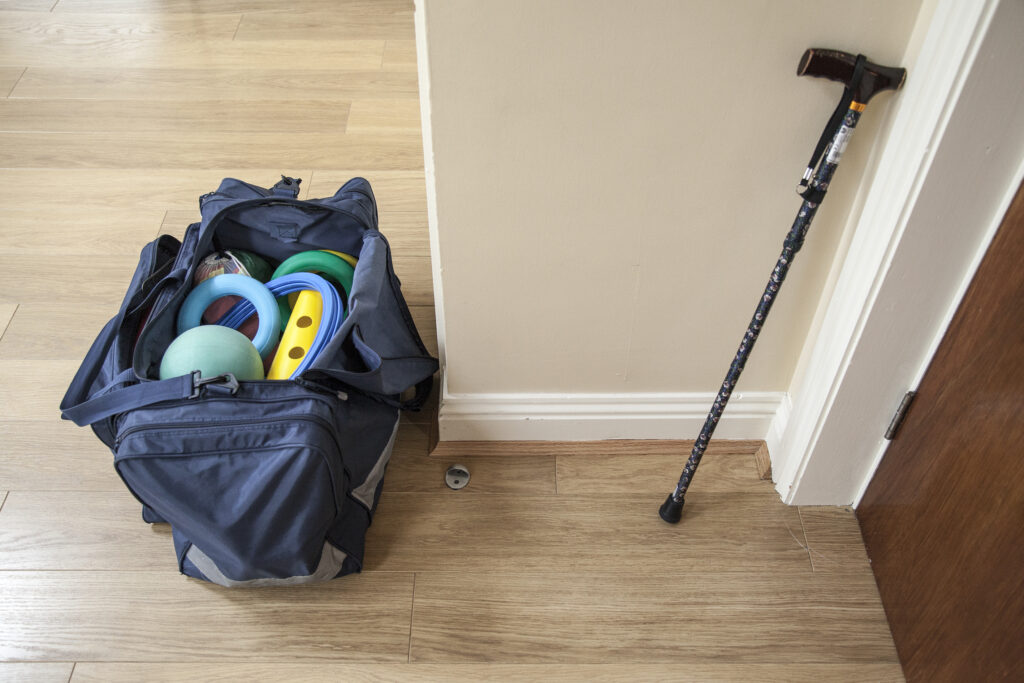Taking Steps to being Active: Facing the Challenges for Polio Survivors
Dr. Deirdre Murray, PhD
Clinical and Research Physiotherapist, Beaumont Hospital and Trinity College Dublin
Polio Survivors Ireland is a charity that provides support to people who contracted polio when babies or young children. Polio survivors have overcome enormous adversity but still need help, including customised shoes. Waiting lists for shoes can be up to 2 years or the alternative is to pay from €600 – €1,200 for special footwear essential to keep them mobile. Wednesday 24th October is World Polio Day and this year, we want to raise awareness on this season’s must haves for polio survivors- customised footwear. There are thought to be 7,000 polio survivors in Ireland, many of them suffering with Late Effects of Polio. Exercise is additionally an issue for those who are impacted, given mobility, fatigue or weakness, which are impacts of Post Polio Syndrome. Below is information on exercising, from Dr Deirdre Murray, Clinical and Research Physiotherapist, Beaumont Hospital and Trinity College Dublin.
Physical inactivity contributes to many health problems including diabetes, obesity and heart disease. Taking one of the key positive steps to improve health – being active – can be very challenging for a person with limited mobility, often due to pain, fatigue and a lack of access to professional advice or equipment.
‘Healthy Ireland’ was established to promote health and wellbeing for the Irish people (http://www.healthyireland.ie). The National Physical Activity Plan, launched in 2016 recommends at least 30 minutes of moderate physical activity 5 days per week for adults over 18. The recommendation for adults with disabilities is ‘to be as active as your ability allows’. The ‘National Exercise Referral Framework’ was published to provide a vision for the structures and resources required in meeting the needs of people with chronic conditions to be active. Unfortunately, there has yet been limited progress in implementing this vision.
A polio survivor, who needed two callipers to walk short distances, once told me her story of receiving a diagnosis of Type 2 Diabetes along with some leaflets about taking a 30 minute walk every day. Clearly this was a ridiculous recommendation for her. However, she figured out that exercising in the pool was a way to get this physical activity in a manageable, safe and pain-free way.
There is some research evidence that pool based exercise (not necessarily swimming) is beneficial for polio survivors and many regularly enjoy this activity. However, for many others, finding an accessible pool or the fatigue associated with getting to the pool and safely home again, prove too much. Clearly, other convenient ways to exercise are needed.
Research completed in Beaumont Hospital looked at arm cycling using a small pedal exerciser placed on a table. Participants in the programme received individual recommendations about how hard and for how long to exercise and slowly progressed over 8 weeks. The group who exercised had lower blood pressure and the majority had no increase in pain or fatigue after 8 weeks of exercise. This research was funded by Polio Survivors Ireland and has been published internationally.
Other researchers looked at using exercise bikes at home. The participants were able to complete the programme and although there were no huge changes in fitness, there was no worsening in fatigue or pain. In some (lucky) European countries there are structured supervised exercise programmes available to polio survivors which are well tolerated and allow access to the benefits of exercise.
The key messages are:
- Before making a big change to your activity level get the ‘all clear’ from your doctor and some personalised advice from a health professional such as a Chartered Physiotherapist.
- ‘Some activity is better than none’. 30 minutes is rarely the starting point for anyone – so aim for as much as you can do. Maybe 2 minutes to start, then slowly working up to 10 minutes. (Increase by 20% once comfortable with the level you are at).
If you can, try to take a 10 minute walk. There is evidence that 10 minutes of continuous walking benefits health. Choose a flat, smooth and safe surface and consider a walking pole or stick if needed. The Irish Heart Foundation has ‘Sli na Slainte’ routes all over the country, mapping short walking routes for those who are suited to this.
- If you like technology, use it to help get motivated. Many people like activity watches (set your own realistic level – it doesn’t have to be 10,000 steps!). The UK health service promotes an app called the ‘Active 10’ which tracks two 10 minute walks a day.
- Do something that you enjoy – or listen to music to distract you, e.g. when using an exercise bike or arm pedals.
- Everyone is different so the key is to do what you can do and keep it up.
- Do not exercise when you are tired and don’t push to fatigue, muscle ache or worsening pain. Listen to your body!


